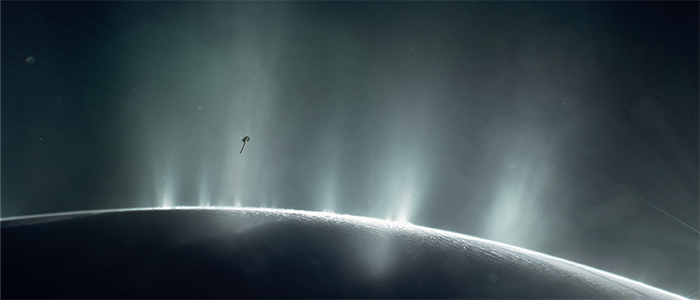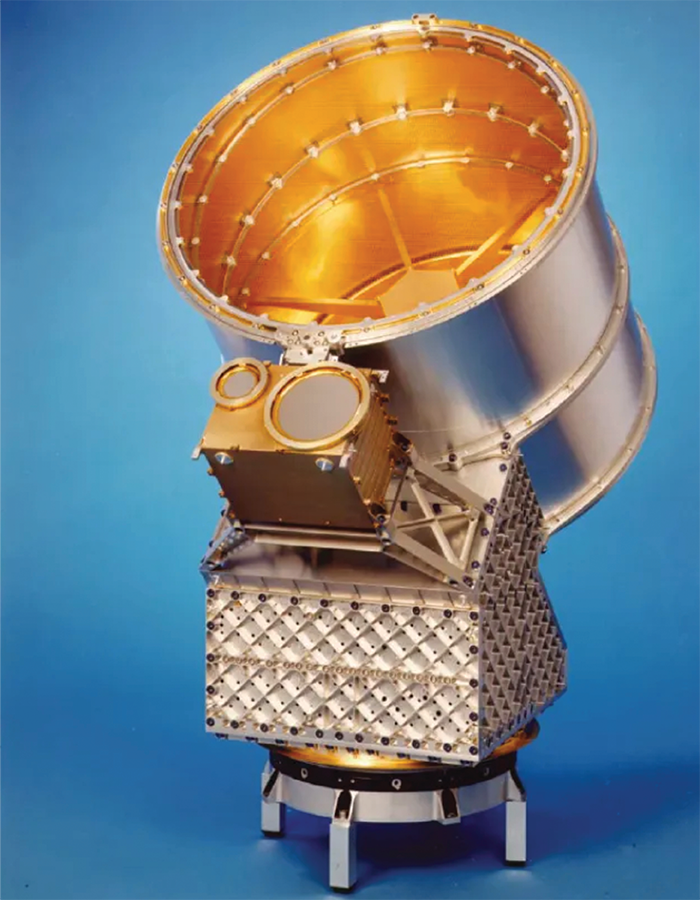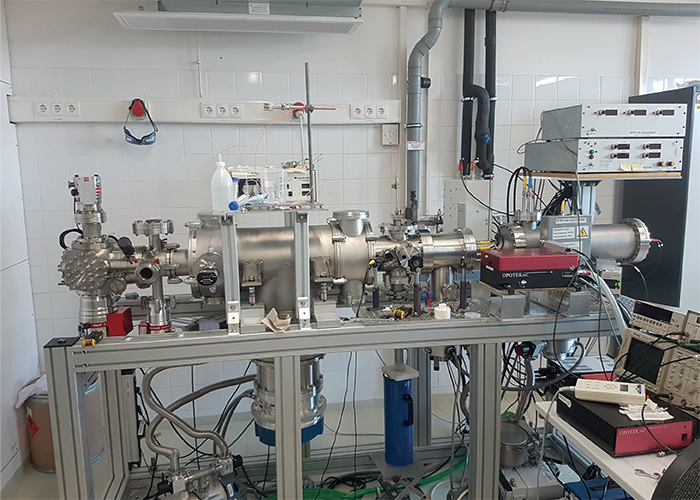Evidence of all six bio-essential elements for life, including the elusive phosphorus, has been found on Saturn’s moon Enceladus (1). We spoke to one of the researchers behind the discovery, Frank Postberg, Professor of Planetary Sciences at the Institute of Geological Sciences, Freie Universität in Berlin, about his work on the Cassini-Huygens mission and what their recent discoveries could mean for the prospect of discovering life elsewhere in the solar system.

Where might we find extraterrestrial life in our solar system?
Within our solar system, there are a few places that have the potential to harbor life. As scientists, we must assess the probabilities, statistics, and conditions of these environments to learn how favorable they are for habitation. We only have Earth as a datapoint for the existence of life and, with a long timeline and high funding requirement to explore other planets, we must demonstrate a high probability of finding useful information before projects will even be considered.
We’re already looking at the potential for life within samples of Mars – a planet that had very good conditions to develop and sustain life four billion years ago and may still hold evidence of such. However, research shows that the availability of both organic and inorganic carbon in the outer solar system is generally much higher than in the inner solar system, where Earth and Mars reside. Over the past 20 years, we’ve also discovered a number of subsurface oceans in the outer solar system – on moons and dwarf planets – some of which have a relatively strong chance of being able to sustain life.

What is the Cassini-Huygens mission?
Cassini-Huygens was launched in 1997 and has been orbiting Saturn from 2004 to 2017. The mission was a collaboration between NASA (who built most of the Cassini orbiter) and the European Space Agency (who built most of the Huygens probe). Planetary science by definition is multidisciplinary – and this mission is no exception. To go beyond Earth, we must also go beyond the horizon of our own perceived capabilities. Connecting insights from multiple instruments and multiple fields of expertise is the best route to exciting scientific discoveries with a space mission. It was an extremely rewarding experience for me to be part of the Cassini-Huygens team – it was such a vibrant and inspiring international scientific community.
What were the main findings of this mission?
Since the mission's arrival at Saturn in 2004, there have been a series of discoveries that placed Enceladus higher on the potential habitability scale. This started with cryo volcanic eruptions shooting out into space through cracks in the moon’s thick, icy crust – which, as we discovered later, concealed subsurface liquid water. Once we confirmed that Enceladus has a global subsurface ocean, we became even more interested in what this tiny moon has to offer. It was so unexpected for such a small moon to create enough energy to maintain a liquid ocean, and somehow, the surprises kept coming!
While flying past Enceladus, the Cosmic Dust Analyzer instrument on the spacecraft had the ability to analyze individual dust and ice grains emitted by Enceladus’ cryovolcanic plume that hit the instrument at high velocities. These samples were then analyzed by time-of-flight mass spectrometry to reveal information about the subsurface ocean. Another instrument aboard the Cassini orbiter was the Ion and Neutral Mass Spectrometer (INMS) – a quadrupole mass spectrometer – designed to probe the composition of volatiles and analyze the gasses emitted by Enceladus. We found substances that gave information about the composition of the ocean and pointed towards hydrothermal activity at Enceladus’ ocean floor. Being so far from the sun, Enceladus needs an alternative energy source, and these hydrothermal vent systems could allow ecosystems to utilize energy independently from sunlight.
The mission ended in 2017, and I applied for funding to form a research group that would allow us to identify and analyze the ice grains from Enceladus with greater precision. This funding also allowed us to better replicate the mass spectra from space with laboratory analogue experiments. After finding evidence for a rich and complex organic chemistry inside Enceladus’ ocean in 2018 and 2019 (2,3), we were delighted and amazed to reveal the presence of sodium phosphates – which we published in June, 2023.
After detecting such a vast amount of phosphate (100 to 1000 times what is present in Earth’s oceans), we connected with our partners in Tokyo, Japan, to use their sophisticated geochemical lab and stimulate the environment at the bottom of Enceladus’ ocean. Cassini’s measurements gave us a good idea of the composition (the salinity, a high amount of carbonates, pH values, and presence of ammonia) – strikingly different to Earth’s ocean. To learn more, we used an Enceladus ocean simulant together with carbonaceous chondrite as an analogue of Enceladus’ rocky material and we monitored how the chemical composition of the ocean simulant changes in this environment, until equilibrium is reached. We discovered that the high amount of carbonate and the high pH of about 10 in the ocean allows high concentrations of phosphates to dissolve from the rocky material.

Why is this discovery of phosphorus so important?
There are six bio-essential elements required for life to form (carbon, hydrogen, nitrogen, oxygen, sulfur, and phosphorus). Previous studies of Enceladus’ water vapor and ice grains had shown definite or tentative evidence of five of these elements, but we were still missing one crucial element for life: phosphorus.
Often seen as a bottleneck for life, phosphorus is the rarest of cosmic abundances. It doesn’t easily dissolve in water – further eliminating bioavailability – but it is essential for the creation of DNA and RNA, energy-carrying molecules, and cell membranes. A publication in 2018 based on geochemical modeling (4) predicted that phosphate and phosphorus levels on ocean moons such as Enceladus would be depleted much more than on Earth, which would drastically limit the prospect of life. Our findings suggest otherwise. And having, for the first time outside of Earth’s atmosphere, found evidence for phosphorus in a liquid water environment, we’re satisfied that Enceladus has favorable conditions to develop and sustain life.
What’s next for detecting life on moons – what are your hopes for the future?
From our research, we believe the conditions of this subsurface ocean are not unique to Enceladus – there could be a number of bodies that harbor oceans with high phosphate availability.
There are two missions coming up to the Jovian ocean moons. The ESA JUICE (JUpiter Icy Moons Explorer) mission is already on its way to take detailed observations of Jupiter and its three large ocean-bearing moons – Ganymede, Callisto, and Europa. In 2024, NASA will be sending the Europa Clipper to explore the habitability of this moon in more detail – which ranks close to Enceladus in terms of its potential for sustaining life.
From the Cassini-Huygens mission, we now know that complex organic chemistry is present on Enceladus, but we need another mission to see if this is an indication for life or prebiotic chemistry. We have the instrumentation ready to launch these “life finder missions,” we just need to fund, assemble, and launch the spacecraft to Enceladus. However, this all takes time and it will probably be another 20 years before the next mission arrives there. Despite this, I’m quite optimistic that it will become reality in the near future – the possibilities of what we could find there are just so exciting.

References
- F Postberg et al., Detection of phosphates originating from Enceladus’s ocean (2023). DOI: 10.1038/s41586-023-05987-9.
- M Lingam, A Loeb, Is Extraterrestrial Life Suppressed on Subsurface Ocean Worlds due to the Paucity of Bioessential Elements? (2018). DOI: 10.3847/1538-3881/aada02.
- F Postberg et al., Macromolecular organic compounds from the depths of Enceladus (2018). DOI: 10.1038/s41586-018-0246-4.
- N Khawaja et al., Low-mass nitrogen-, oxygen-bearing, and aromatic compounds in Enceladean ice grains (2019). DOI: 10.1093/mnras/stz2280.




